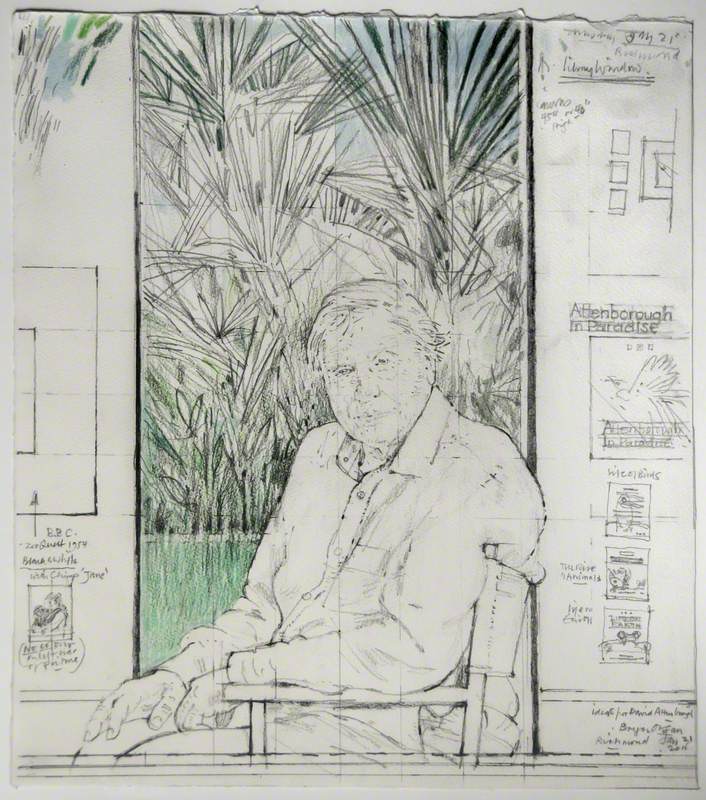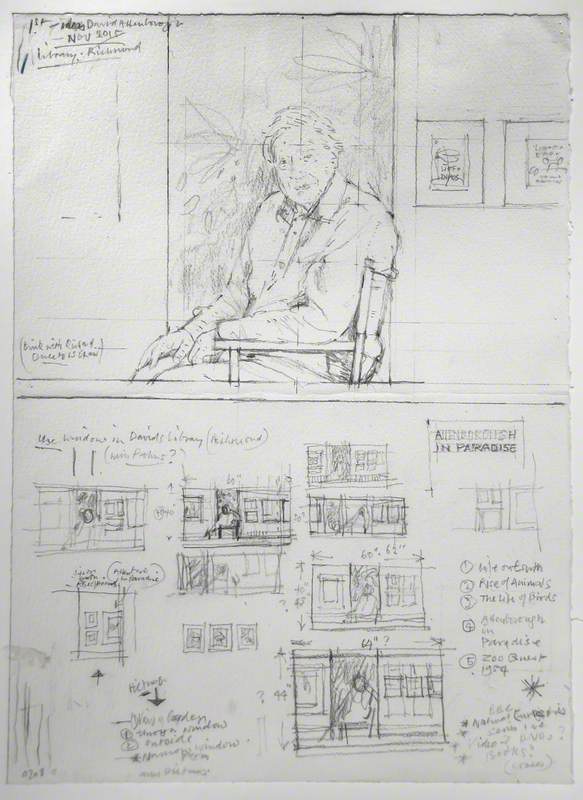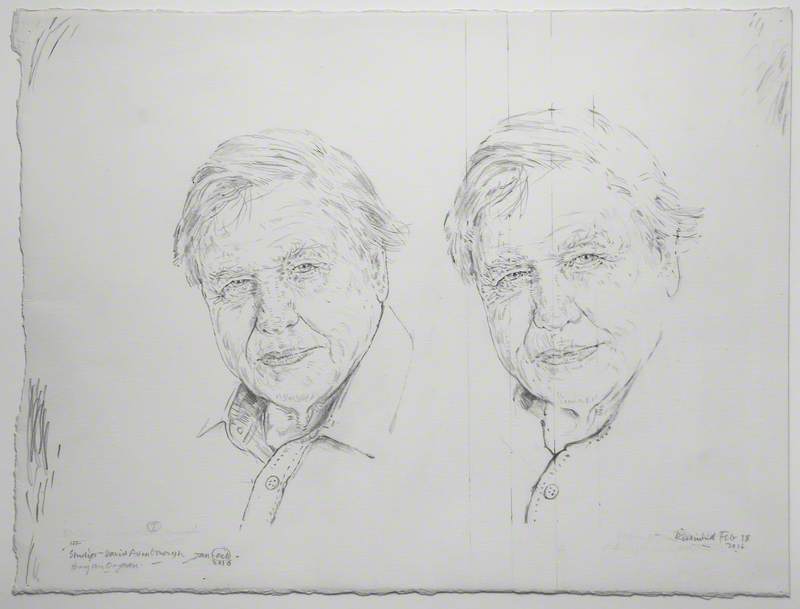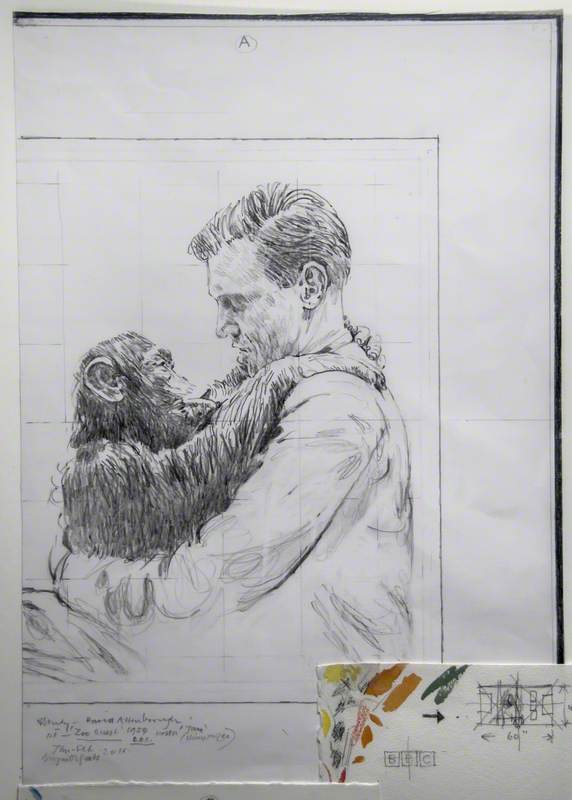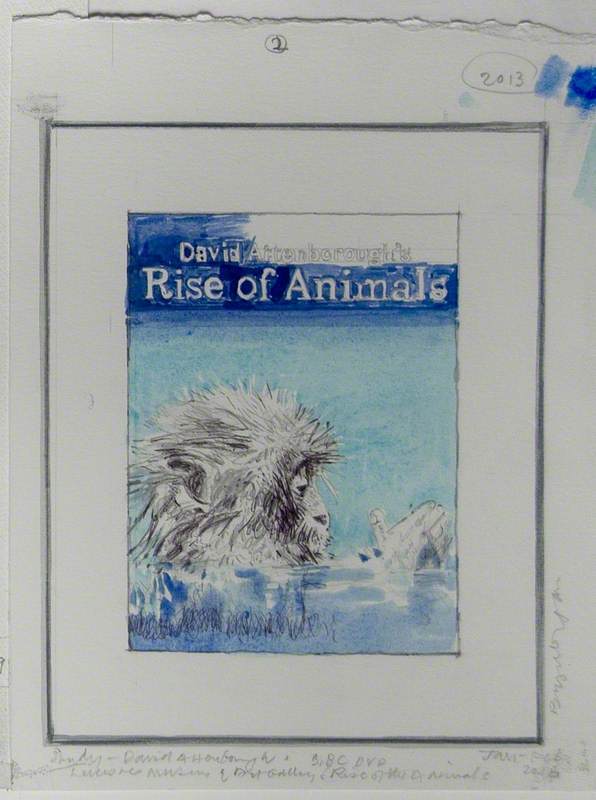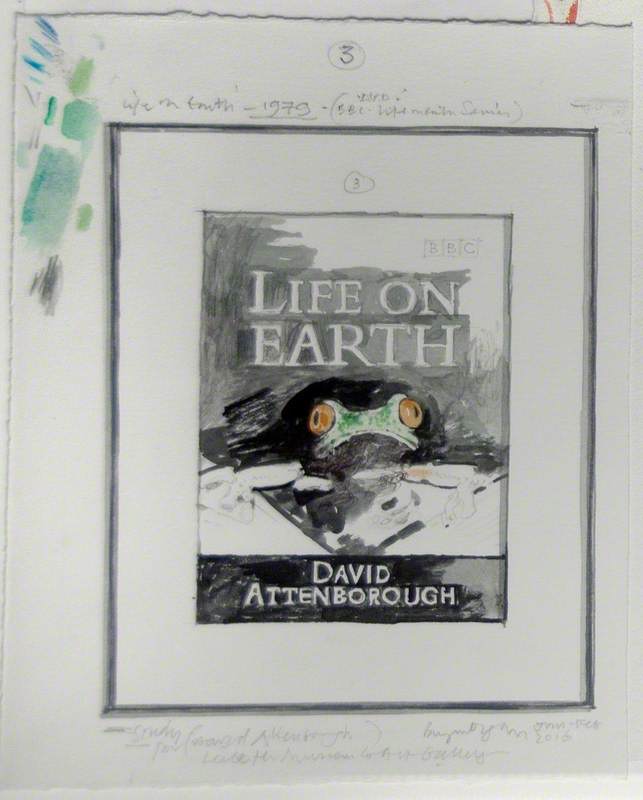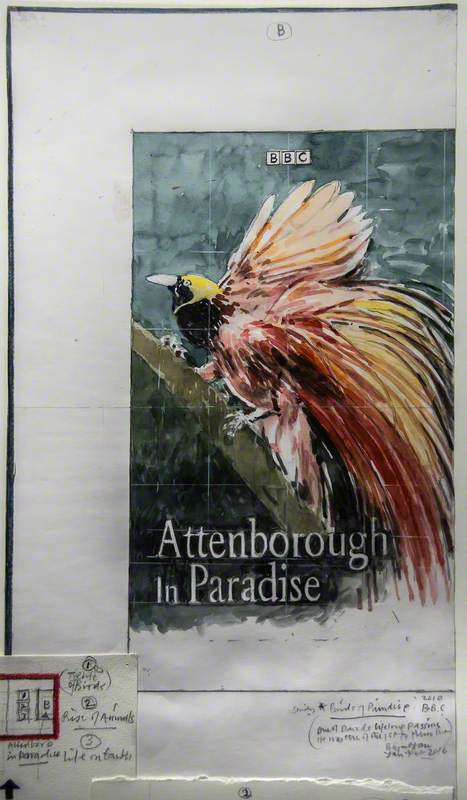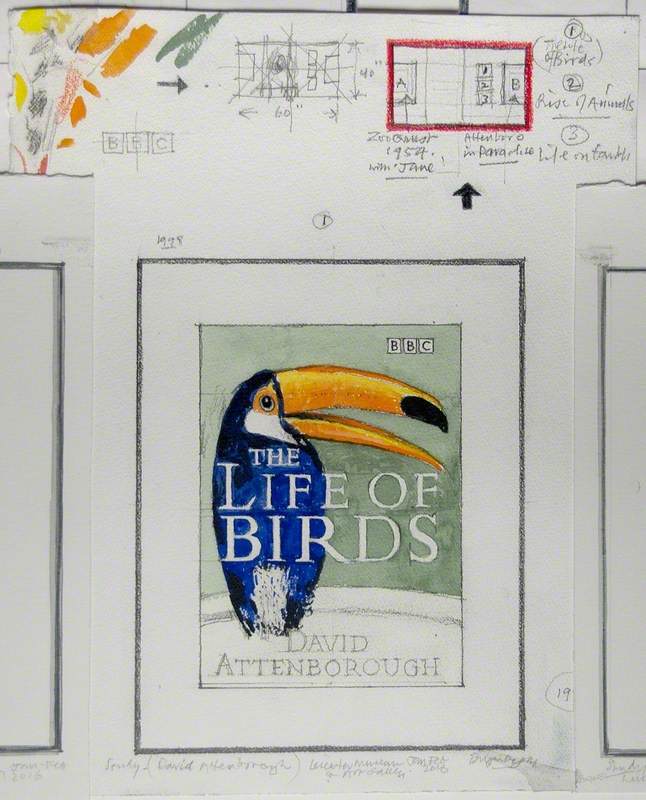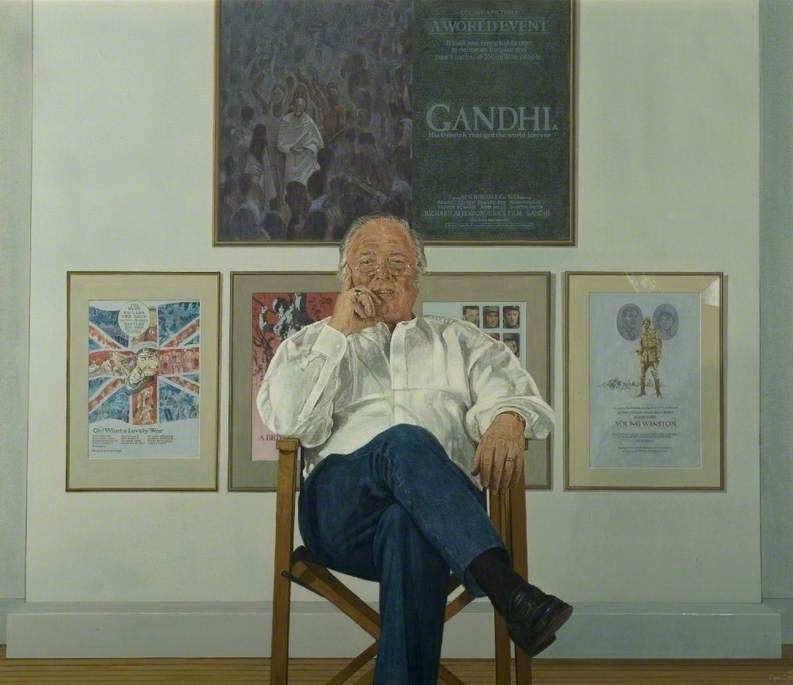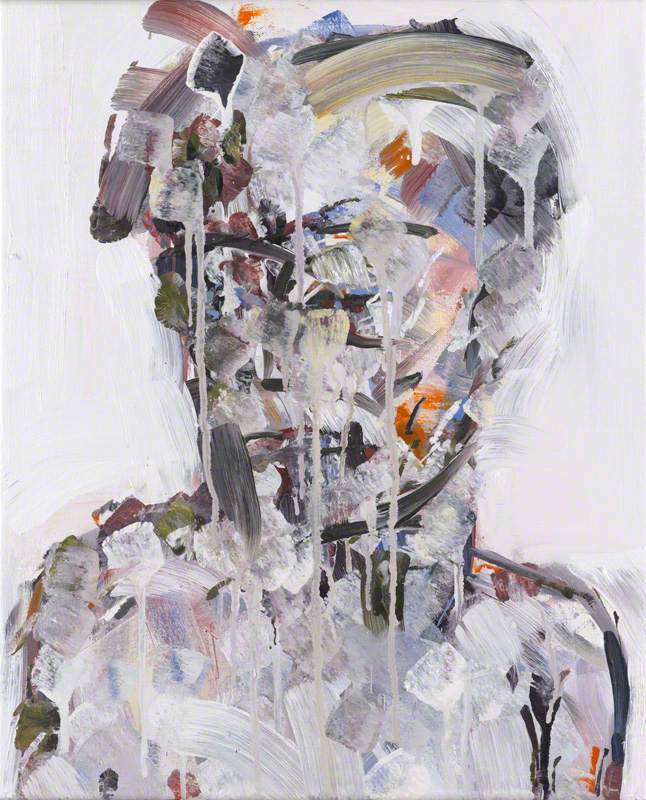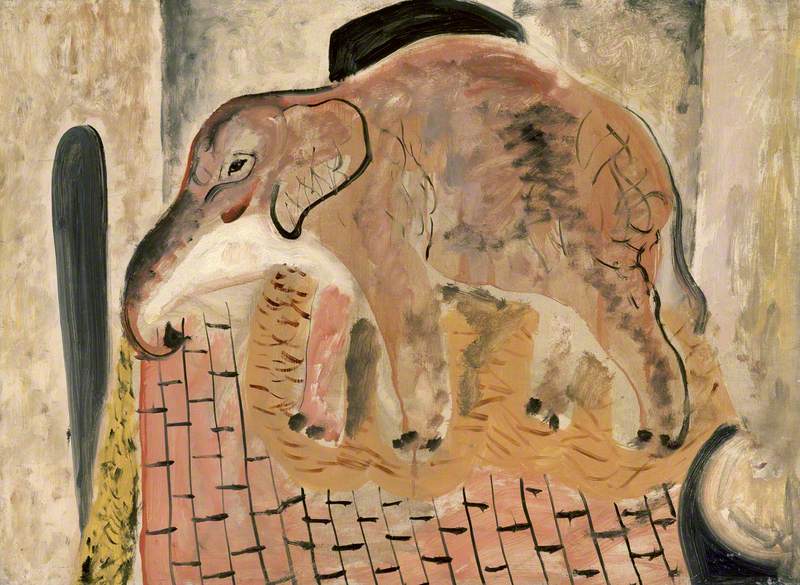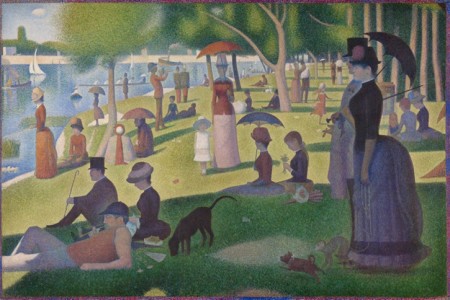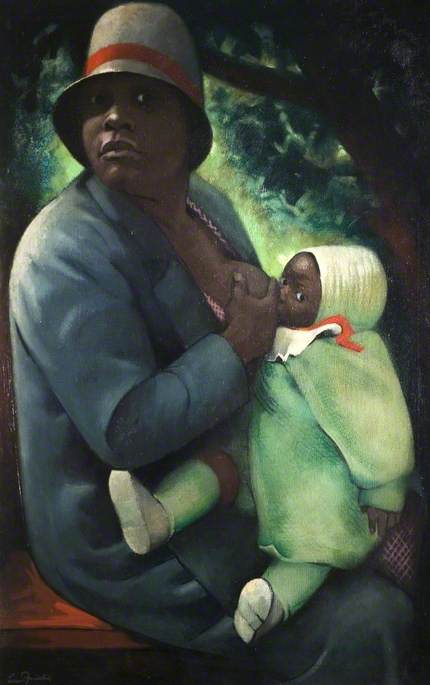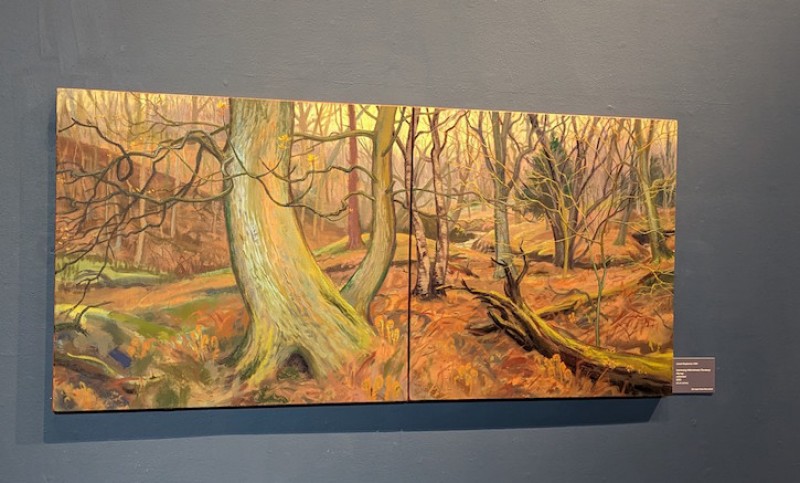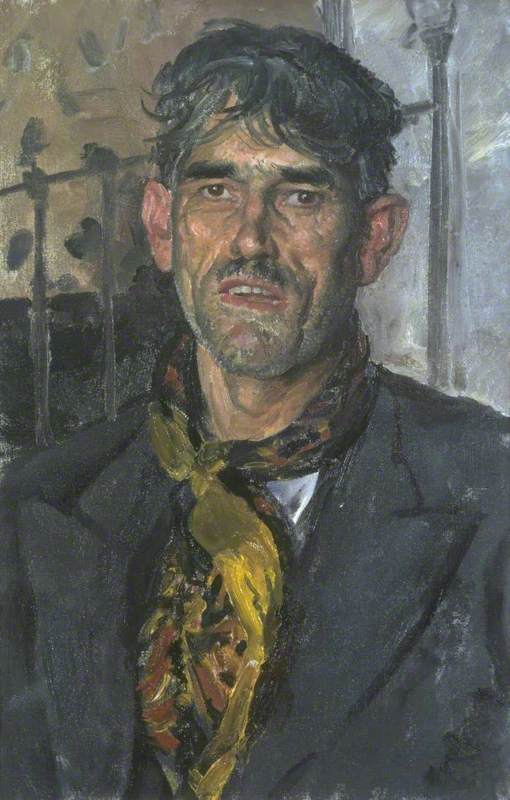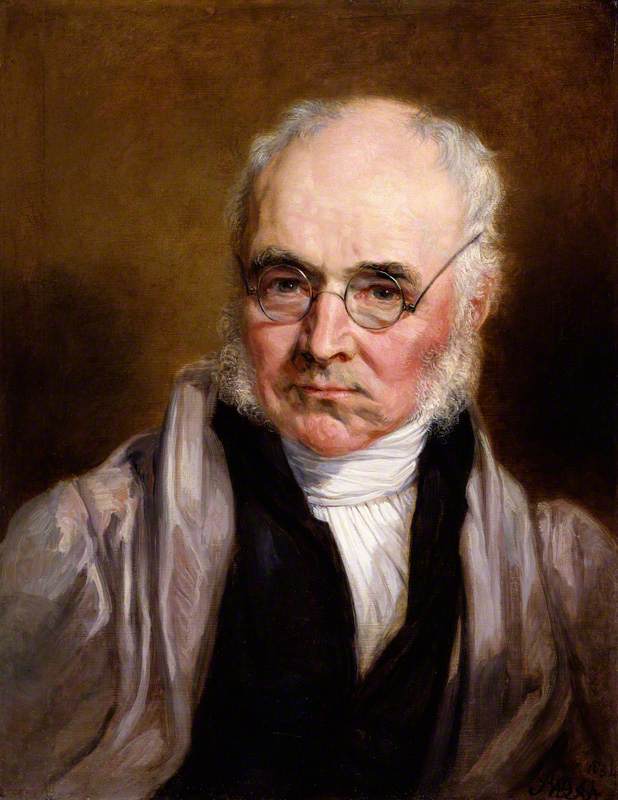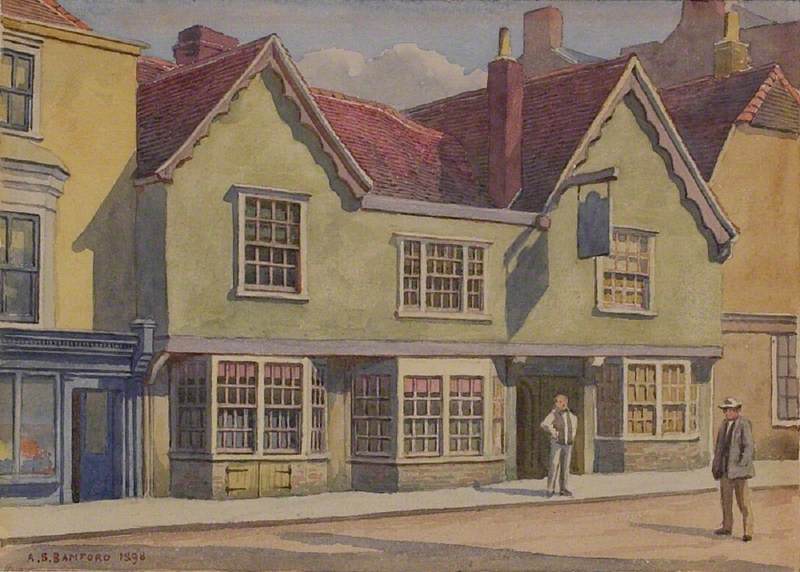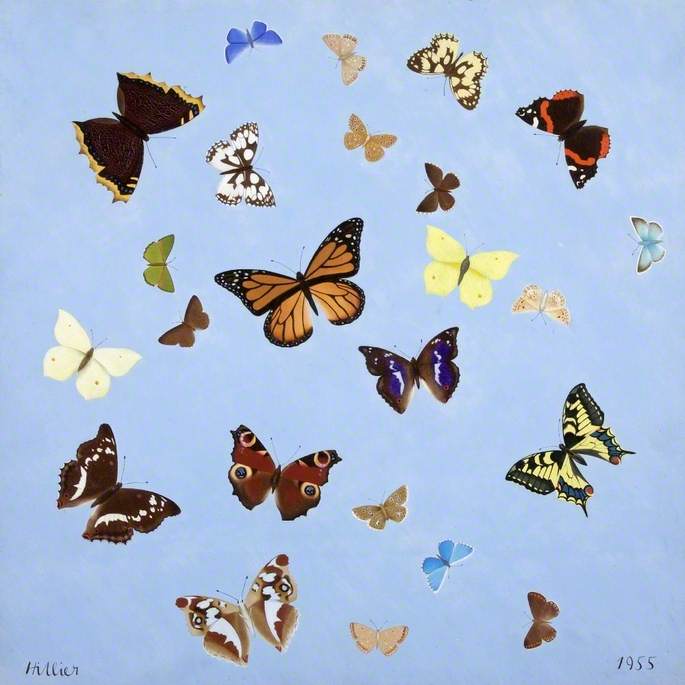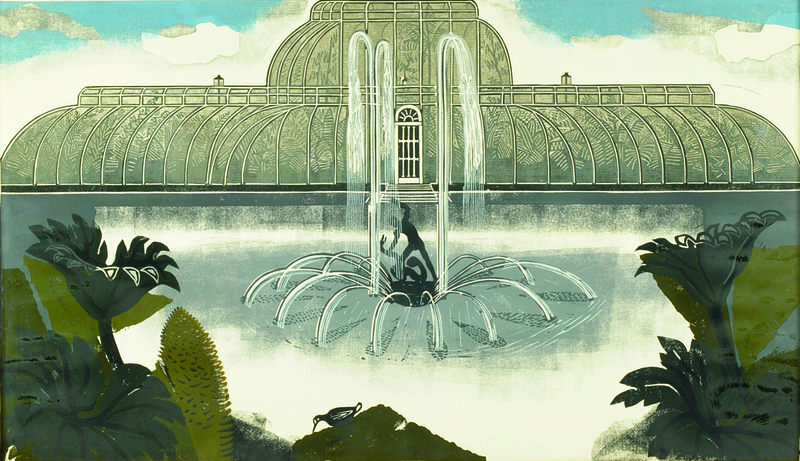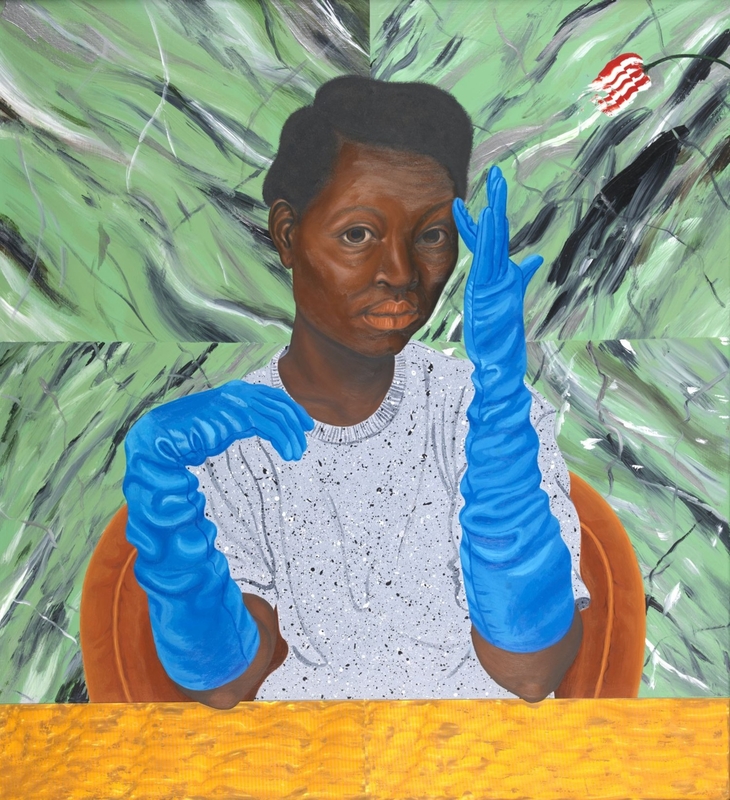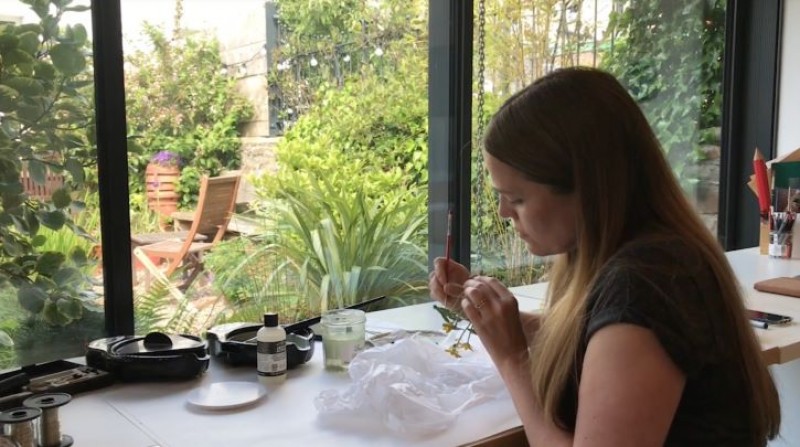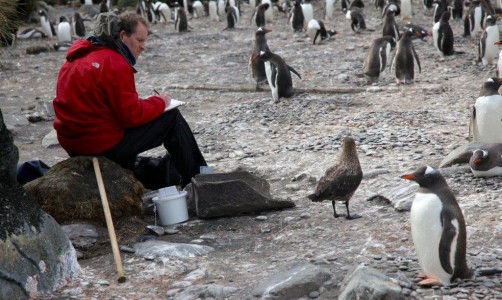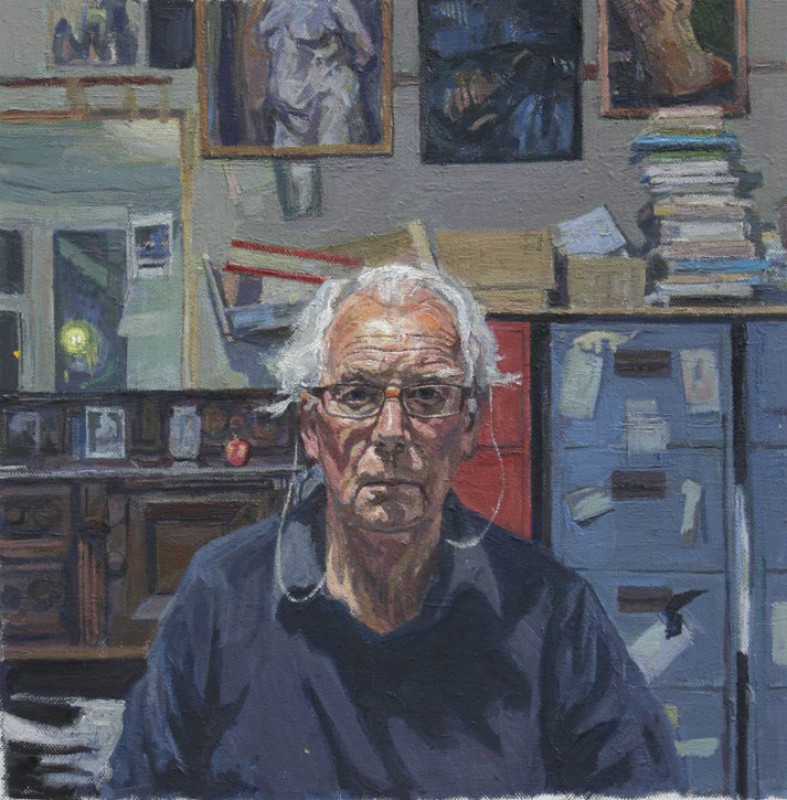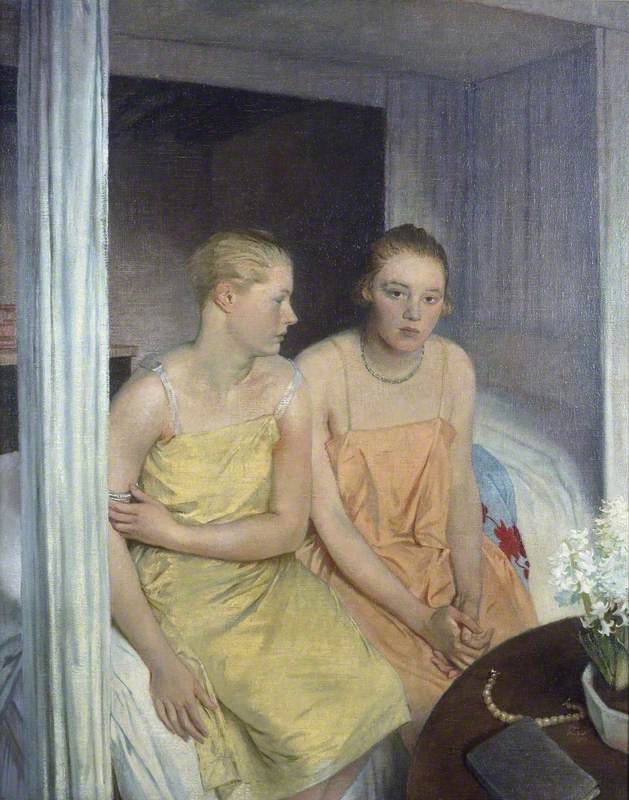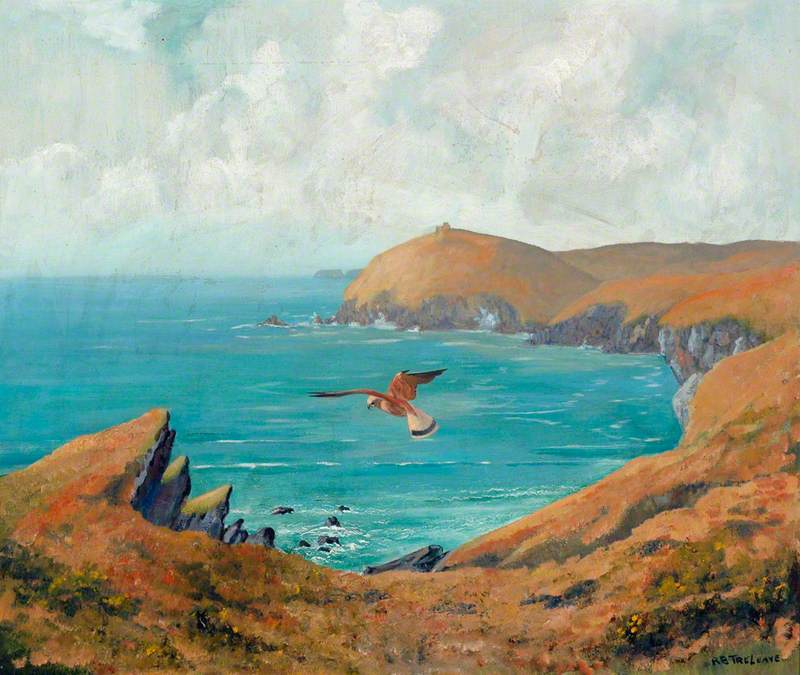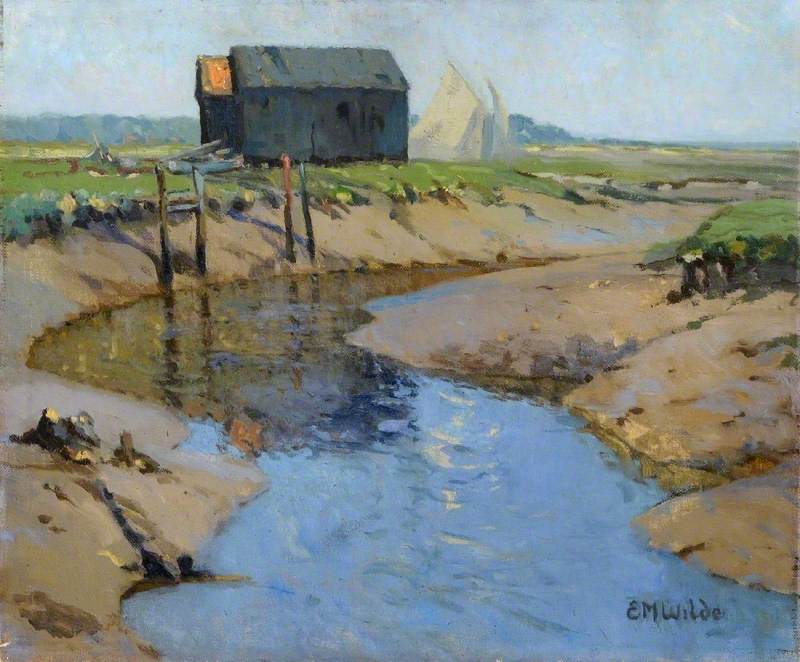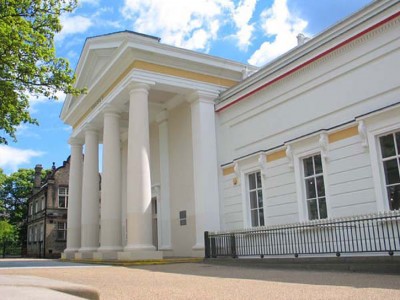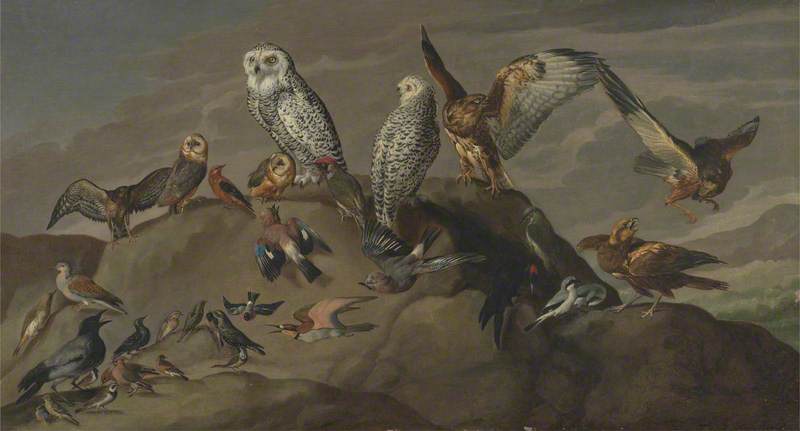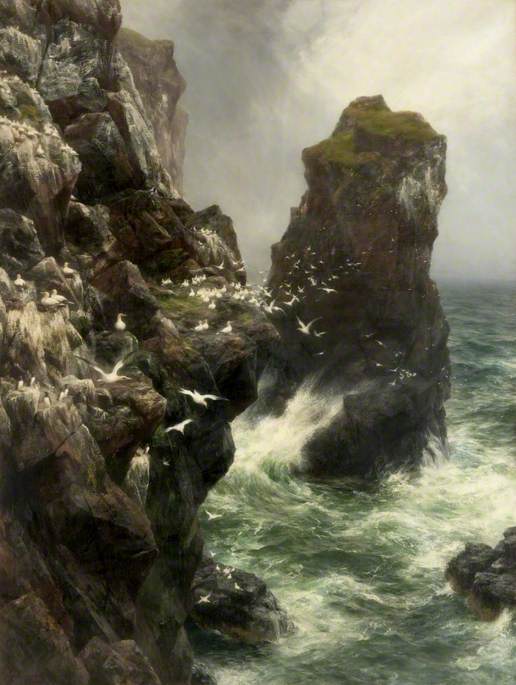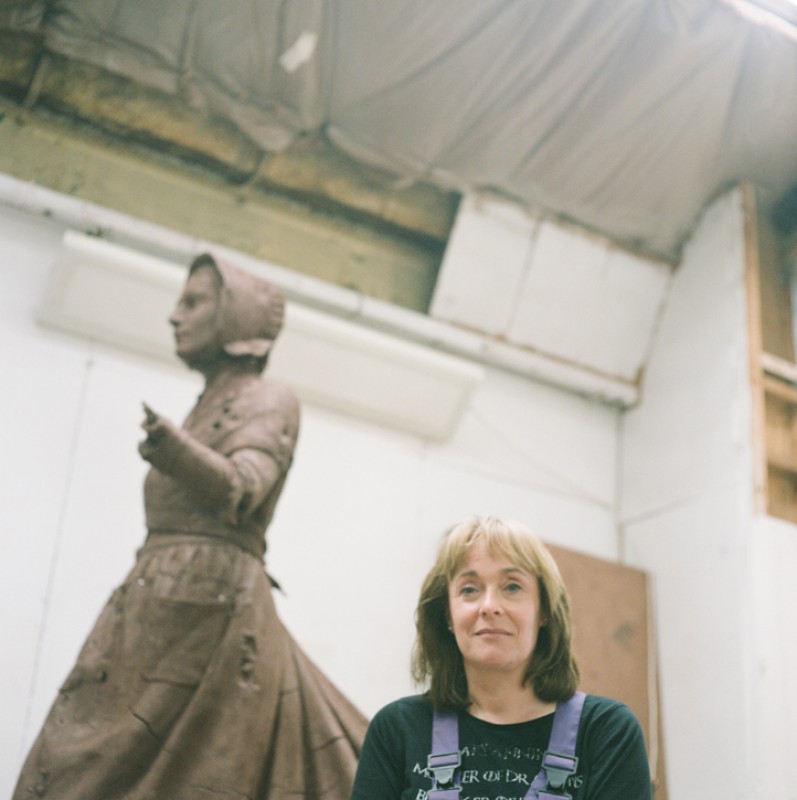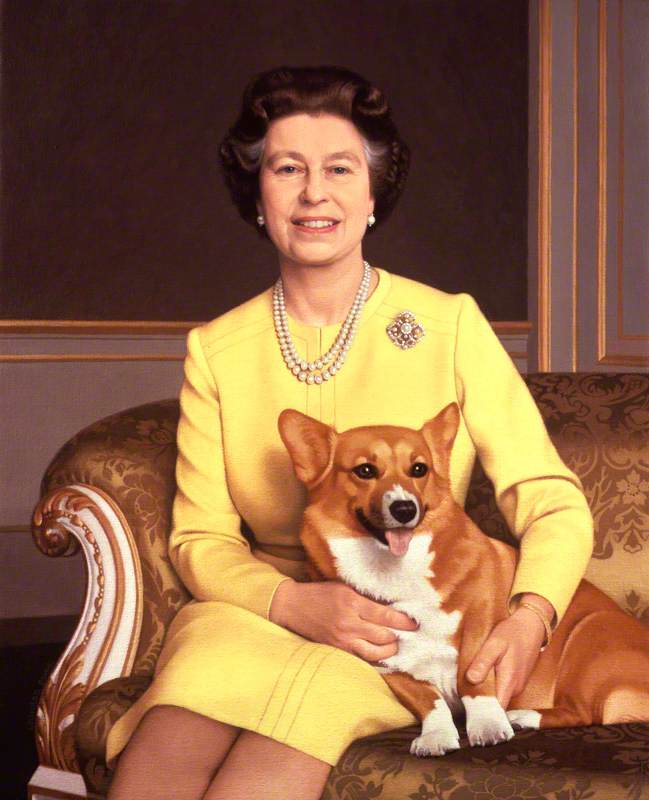Several celebrated travellers have set forth from Leicester. Among them there was Thomas Cook (1808–1892) pioneer of tourism by rail and sea, opening up the world to the masses. And a century later, David Attenborough, the naturalist, travelogue and broadcaster who, with fearless camera crews, has brought the world to us. In a procession of television films, each series more ground-breaking than the last, Sir David has revealed the beauty, scale and complexity of our world. We see it as no human before
And who better to paint his portrait than Bryan Organ, another son of Leicester, an artist whose subjects have defined the last half century of British life. Among his seven paintings in the National Portrait Gallery are: Roy Strong (1971), Harold Macmillan (1980), Charles, Prince of Wales (1980), Diana, Princess of Wales (1981), Lord Denning (1982), Prince Philip, Duke of Edinburgh (1983) and Prime Minister, Jim Callaghan (1983).
Attenborough in Paradise (Portrait of Sir David Attenborough)
2016
Bryan Organ (b.1935) 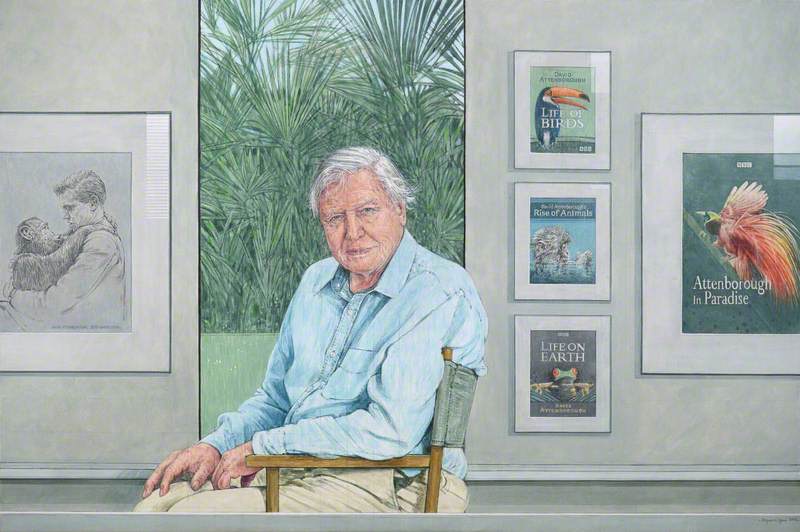
Organ’s Attenborough in Paradise (Portrait of Sir David Attenborough) was completed over a one-year period and was finally unveiled at the Museum by the sitter in 2016. The finished work demonstrates how a painted image can go deeper than most single-shot photographic portraits. The initial impression is
And that genial look over the shoulder. Here too an ambivalence: who do we see? An urbane, genial raconteur? Or maybe a sharp-eyed
Choosing the artist for the museum’s commission was not difficult. They already owned Organ’s portrait of David’s older brother, actor and director Richard (later Lord) Attenborough.
The atmosphere is warmer and more internal than the more recent portrait of David, which in contrast is cool and airy with its watery blue-green tones. Organ exploits the natural white of the canvas to illuminate the portrait of Sir David. The paint is thinly applied allowing the blocking grid of pencil lines (also seen in the preparatory sketches) to show through. The artist does not intend to disguise a time-honoured technique of scaling up from sketch to canvas, reminding the viewer of the portrait’s artifice – an assemblage of sittings and minutely adjusted points-of-view.
Asked what it was like to paint David Attenborough, Organ says: ‘Very complex, very enjoyable. David was hugely enthusiastic and totally cooperative’. The resulting painting, which took a year to complete, is a worthy pendant to Organ’s 1985–1986 portrait of Richard. The brothers are united in their home city, and by an artist (like the present writer) who attended the same school.
Today – placed among fossil trophies collected around the dawn of Darwinism – Attenborough’s look of a keen-eyed scientist recalls that ‘other’ great evolutionist, Alfred Russell Wallace (1823–1913), another explorer to sally forth from the city of Leicester.
Lars Tharp, historian, lecturer and broadcaster
